THE STAR OF 34TH STREET
The Making of Modern Magic
Macy’s, one of American history’s most iconic department stores, has been a significant force in the retail industry for well over a century. From its early beginnings as a modest dry goods store in New York City, Macy’s has expanded into a nationwide retail giant. It is best known today for its flagship location in Herald Square and the annual Macy’s Thanksgiving Day Parade. As the parade celebrates its 98th year, it stands as a festive symbol of the holiday season and a reflection of Macy’s enduring legacy.
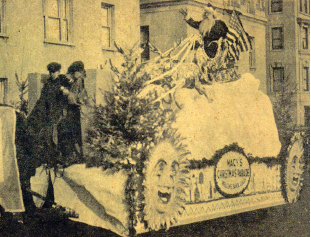
THE FOUNDING OF MACY’S
Macy’s was founded by Rowland Hussey Macy in 1858. Macy, who had been involved in retail and whaling before establishing his store, opened R.H. Macy & Co. as a dry goods business at the corner of 14th Street and 6th Avenue in New York City. From the outset, Macy implemented innovative marketing techniques that distinguished his store from competitors. He introduced the concept of fixed prices—a rarity when haggling was common. Macy’s also embraced newspaper advertisements, a new strategy that helped him reach a wider audience.
The store was an immediate success, and by the 1870s, it had expanded to neighboring buildings, eventually covering an entire city block. Macy’s implemented several retail innovations, including “money-back guarantees,” the first in-store Santa Claus, and elaborate holiday window displays. These initiatives contributed to Macy’s reputation as a trailblazer in the retail world.
In 1902, Macy’s moved to its current flagship location in Herald Square, at the intersection of 34th Street and Broadway. The new store was an architectural marvel, boasting one million square feet of selling space. Over the years, Macy’s Herald Square has become a New York City landmark, attracting millions of visitors annually and becoming the world’s largest store by square footage.
MACY’S EXPANSION
By the early 20th century, Macy’s was more than just a department store—it was a cultural institution. The store’s massive success allowed it to expand beyond New York, acquiring regional chains nationwide. Macy’s became synonymous with quality, selection, and service, setting other retailers’ standards.
Macy’s influence extended beyond commerce, shaping how Americans experienced holidays and special events. Macy’s introduced extravagant Christmas window displays that became a must-see attraction for families during the holiday season. The store also became the focal point of Thanksgiving celebrations in New York City, a nod to the Macy’s Thanksgiving Day Parade.
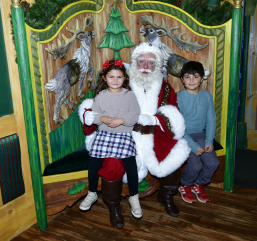
THE THANKSGIVING DAY PARADE
The Macy’s Thanksgiving Day Parade is one of the longest-running traditions in American history, and it celebrates its 98th anniversary this year. The parade was initially conceived by Macy’s employees, many of whom were immigrants who wanted to celebrate the American holiday in a grand, festive manner. Macy’s executives embraced the idea, seeing it as an opportunity to attract shoppers to the store and boost sales during the holiday season.
The first parade, known as the “Macy’s Christmas Parade,” took place on Thanksgiving Day in 1924 (the name was changed in 1927). It featured live animals borrowed from the Central Park Zoo, including elephants, camels, and bears. In addition to the animals, the parade included floats, professional bands, and costumed Macy’s employees. Santa Claus debuted at the end of the parade, a tradition that continues today, symbolizing the official start of the Christmas season.
The parade was a huge success, drawing crowds of over 250,000 people, and it became an annual event. In the years that followed, the parade grew in popularity, becoming a symbol of the Thanksgiving holiday for millions of Americans.

BALLOONS, FLOATS & SANTA
One of the most significant developments in the parade’s history was the introduction of giant helium balloons in 1927. Felix the Cat, a popular cartoon character at the time, was the first giant balloon to be featured in the parade. These balloons became an instant hit with the crowd and soon became the most iconic part of the parade.
The introduction of balloons marked a shift in the parade’s focus. Over the years, balloons grew in size and variety, featuring popular characters from pop culture, including Mickey Mouse, Superman and Snoopy. The parade also expanded its floats, bands, and live performances, becoming a spectacle that attracted New Yorkers and viewers from across the country.
In 1948, the parade began being broadcast on national television, further cementing its place in American culture. Millions of families tuned in to watch the parade each Thanksgiving morning, making it a cherished holiday tradition. The broadcast showcased not only the elaborate balloons and floats but also Broadway performances, celebrity appearances, and musical acts, providing entertainment for all ages.
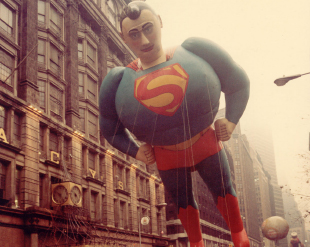
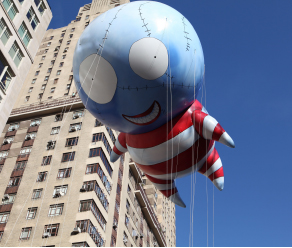
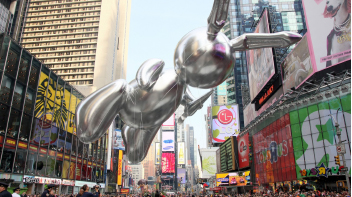
THE PARADE IN THE MODERN ERA
As the parade evolved, so did its cultural significance. In the 1960s and 1970s, the parade reflected the shifting dynamics of American society, featuring a more diverse lineup of performances and characters that mirrored the country’s changing demographics. The 1980s and 1990s saw the parade embrace modern technology and marketing, with sponsors and corporations partnering with Macy’s to feature branded balloons and floats.
Despite the commercialization, the Macy’s Thanksgiving Day Parade has remained a beloved family tradition. Each year, around 3.5 million spectators line the streets of Manhattan to watch the parade, while millions more tune in from home. The parade continues to feature a mix of new and classic balloons, floats, and performances, appealing to multiple generations of viewers—and, of course, the North Pole’s favorite resident.
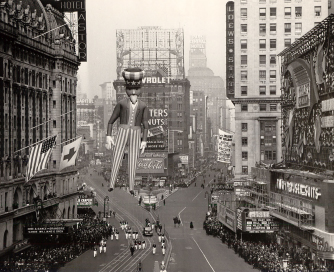
CHALLENGES & TRIUMPHS
The Macy’s Thanksgiving Day Parade has faced its challenges over the years. In the 1940s, the parade was suspended for three years during World War II, as the helium and rubber used for balloons were needed for the war effort. The parade returned in 1945 and resumed its role as a symbol of hope and celebration during the post-war years.
Mother Nature has also posed a challenge at times. High winds have occasionally forced parade organizers to ground balloons for safety reasons, and rain has dampened some performances. Despite these obstacles, the parade has consistently gone forward, embodying the resilience and joy of the holiday season.
In recent years, the COVID-19 pandemic presented one of the most significant challenges in the parade’s history. In 2020, Macy’s reimagined the event, holding a scaled-down version with no live spectators and a pre-recorded broadcast. The adjustments allowed the parade to continue its legacy while prioritizing public health.
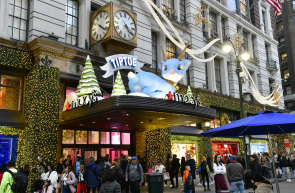
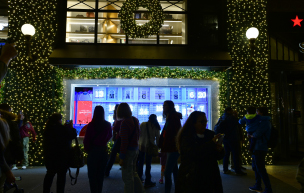
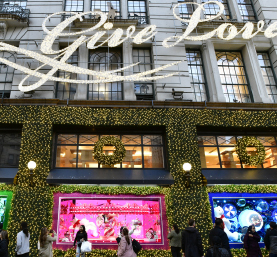
A CELEBRATION OF
TRADITION & INNOVATION
As the Macy’s Thanksgiving Day Parade celebrates its 98th year on November 28th, it serves as a testament to Macy’s enduring legacy and its ability to adapt to changing times. The celebration is expected to be one of the most spectacular parades yet, with new balloons, floats, and performances paying homage to the event’s rich history while embracing the future.
Macy’s plans to honor the past by bringing back some of the most iconic balloons and floats from previous parades. The parade will likely feature special performances from Broadway shows, musicians, and celebrities, reflecting the parade’s evolution into a multimedia extravaganza.
The history of Macy’s is deeply intertwined with the history of American retail and popular culture. From its humble beginnings as a small dry goods store to its status as a retail giant, Macy’s has consistently been at the forefront of innovation and celebration. The Macy’s Thanksgiving Day Parade symbolizes that legacy—a beloved tradition that has brought joy to generations of Americans.
The parade continues to capture the spirit of Thanksgiving, uniting people from all walks of life in celebration. With a rich history and bright future, the Macy’s Thanksgiving Day Parade remains one of American culture’s most enduring and iconic events.
For more information on Macy’s and the Thanksgiving Day parade, visit macys.com/s/parade





